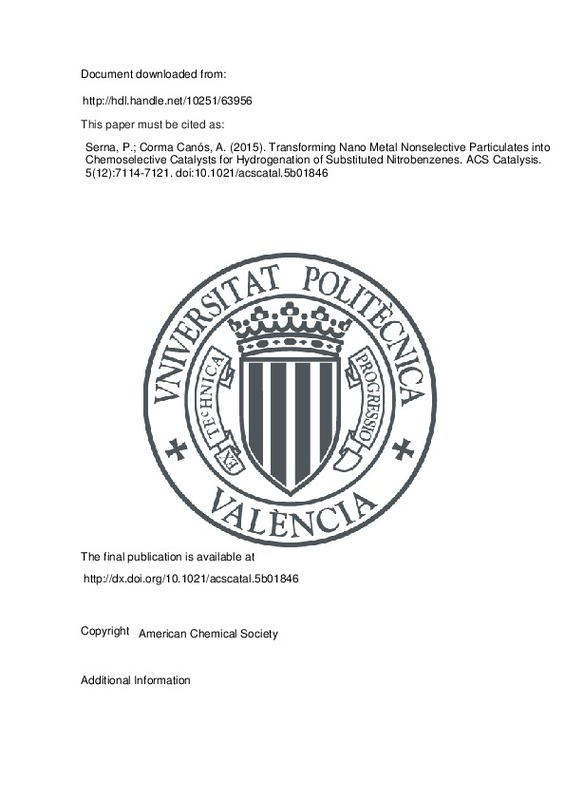|
Resumen:
|
The hydrogenation of nitro compounds is an industrial process that has experienced a renovated interest in the last 10 years due to the discovery of highly selective and environmentally friendly solid catalysts. Particularly, ...[+]
The hydrogenation of nitro compounds is an industrial process that has experienced a renovated interest in the last 10 years due to the discovery of highly selective and environmentally friendly solid catalysts. Particularly, the performance of chemoselective reactions in the presence of very sensitive groups such as double and triple CC bonds, with H-2 as reductant and no soluble additives needed, had been elusive for decades. The discovery that gold nanopartides on solid supports could carry out such a reaction very selectively invigorated this area of research and claimed gold as an outstanding catalyst beyond oxidation processes. Subsequent work, devoted to understand how gold catalysts operate, established a strong basis for the design of more efficient materials and the development of new routes for the synthesis of nitro derivatives. Here, we present three generations of materials that allowed improving the performance of the original gold catalysts. The relatively low activity of the initial Au/TiO2 catalysts could be first boosted, without practical loss of selectivity, by the design of a material that incorporated two catalytic functions on the support: small amounts of platinum to enhance H-2 dissociation and a greater amount of gold to activate the -NO2 group. Later, we learned how to control the catalytic structures and induce chemoselectivity to traditionally unselective metals such as platinum, ruthenium, and nickel nanoparticles. Recently, Fe2O3 nanoparticles surrounded by a nitrogen-doped carbon layer have erupted as a promising alternative. A remarkable outcome from all that work is that the final pool of catalytic alternatives has been markedly expanded. Diversity is important because different solutions may open new gates to different catalytic processes, and we summarize here how the scope of new reactions and products could be expanded by means of properly designed metal catalysts in which the support and metal work in a concerted way to direct the reaction toward the desired product. For example, whereas Au/TiO2 is a chemoselective catalyst that drives the reaction efficiently to the fully reduced reaction product (aniline), the reaction could be tuned to obtain azocompounds in high yields by using nanoparticulated ceria to support the gold nanoparticles. On the other hand, whereas nitrobenzenes and aldehydes react in H-2 to afford ftnines in the presence of Au/TiO2, the product distribution can be switched toward a more oxidized condensation product (a nitrone) using a chemoselective Pt/C catalyst, or to produce cyclohexanone oxime directly from nitrobenzene by means of supported Au and Pd metal catalysts. These and other examples represent some notable achievements, which are possibly, just the tip of the iceberg.
[-]
|
|
Agradecimientos:
|
The research was supported by Project CONSOLIDER INGENIO (MULTICAT), PROMETEO, the SEVERO OCHOA Program for centers of excellence. P.S. thanks the "Subprograma Ramon y Cajal" for the contract RYC-2012-10662. The European ...[+]
The research was supported by Project CONSOLIDER INGENIO (MULTICAT), PROMETEO, the SEVERO OCHOA Program for centers of excellence. P.S. thanks the "Subprograma Ramon y Cajal" for the contract RYC-2012-10662. The European Union is also acknowledged by ERC-AdG-2014-671093 - SynCatMatch.
[-]
|







![[Cerrado]](/themes/UPV/images/candado.png)


